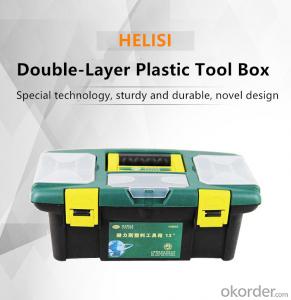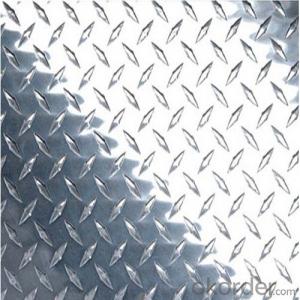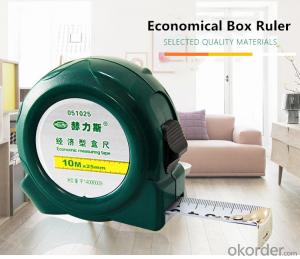Aluminum Diamond Plate Box
Aluminum Diamond Plate Box Related Searches
Led Light Bulbs For Ceiling Fixtures Led Lamps For Ceiling 42 In Ceiling Fan With Light Aluminum Coil Stock For Gutters Aluminum Foil For The Grill Hole Saw For Aluminum Plate Aluminum Tread Plate For Trailer Bow Plate For Aluminum Boat Aluminum Foil For Grow Room Aluminum Foil For Joint PainHot Searches
Stock Price For Aluminum Aluminum Coil Stock For Sale Aluminum Gutter Coil For Sale Used Aluminum Scaffolding For Sale 1/4 Aluminum Plate For Sale Aluminum Bar Stock For Sale Aluminum Round Stock For Sale Aluminum Diamond Plate For Sale Aluminum Scaffolding For Sale Craigslist 6061 Aluminum Plate For Sale Aluminum Dock Plate For Sale 7075 Aluminum Plate For Sale Aluminum Tread Plate For Sale Aluminum Checker Plate For Sale Aluminum Plate For Sale Near Me Plate Aluminum For Sale Aluminum Plate For Sale Aluminum Square Stock For Sale Aluminum Flat Stock For Sale Billet Aluminum Stock For SaleAluminum Diamond Plate Box Supplier & Manufacturer from China
Okorder.com is a professional Aluminum Diamond Plate Box supplier & manufacturer, offers integrated one-stop services including real-time quoting and online cargo tracking. We are funded by CNBM Group, a Fortune 500 enterprise and the largest Aluminum Diamond Plate Box firm in China.Hot Products
FAQ
- The maximum size available for aluminum sheets can vary depending on the manufacturer and specific requirements. However, aluminum sheets are commonly available in sizes up to 4 feet by 12 feet (48 inches by 144 inches) or even larger. These larger sizes are often used in industries such as construction, aerospace, and automotive manufacturing. It is important to note that custom sizes can also be fabricated based on individual project needs.
- The market offers a variety of aluminum sheet grades, each possessing unique properties and applications. Some notable grades are as follows: 1. Grade 1100: Renowned for its exceptional resistance to corrosion and high thermal conductivity. It finds common usage in chemical equipment, reflectors, heat exchangers, and electrical conductors. 2. Grade 3003: This grade contains manganese, rendering it highly resistant to corrosion. It is frequently employed in cooking utensils, storage tanks, and architectural trim. 3. Grade 5052: Exhibits good formability and high fatigue strength. It is frequently utilized in marine applications such as boat hulls and components, as well as in aircraft fuel tanks and structural parts. 4. Grade 6061: Distinguished by its excellent strength-to-weight ratio and favorable machinability. It is commonly employed in automotive parts, bicycle frames, and structural components. 5. Grade 7075: Possesses exceptional strength and toughness, making it suitable for aerospace applications, including aircraft wings and fuselage structures. Every aluminum sheet grade possesses unique characteristics and is selected based on specific application requirements. Factors such as corrosion resistance, strength, formability, and machinability should be carefully considered when determining the appropriate grade.
- The surface cleanliness of aluminum sheet has a significant impact on its adhesion properties. A clean surface is crucial for achieving strong adhesion because any contaminants, such as dirt, oil, or oxidation, can inhibit the bonding process. These impurities create a barrier between the adhesive and the aluminum surface, reducing the strength of the bond. Therefore, ensuring the surface is properly cleaned and free from any contaminants is essential to maximize the adhesion properties of aluminum sheet.
- Yes, aluminum sheets are highly suitable for marine vessel construction. Aluminum possesses excellent corrosion resistance properties, making it ideal for use in saltwater environments. It is lightweight yet strong, providing a great balance between durability and weight savings. This allows for increased fuel efficiency and higher payload capacity. Additionally, aluminum is easy to fabricate, weld, and repair, making it a preferred choice for shipbuilders. Its high strength-to-weight ratio, along with its ability to withstand extreme temperatures, also makes it suitable for various marine applications, including hulls, decks, superstructures, and other structural components. Overall, the use of aluminum sheets in marine vessel construction offers numerous advantages, making it a popular choice in the maritime industry.
- Yes, aluminum sheets can be used for both roofing and siding purposes. Aluminum is a popular choice for these applications due to its lightweight nature, durability, and resistance to corrosion. It is commonly used in residential, commercial, and industrial buildings for its ability to withstand harsh weather conditions, including rain, snow, and UV rays. Additionally, aluminum is a versatile material that can be easily shaped, allowing for various design options.
- Aluminum sheets are highly versatile and widely used in various industries due to their excellent properties. Some common uses of aluminum sheets include: 1. Construction: Aluminum sheets are commonly used in the construction industry for roofing, siding, and insulation purposes. They are lightweight, durable, and corrosion-resistant, making them ideal for creating a protective barrier against the elements. 2. Transportation: Aluminum sheets are extensively used in the automotive and aerospace industries. They are used in the manufacturing of car bodies, truck trailers, and aircraft parts due to their high strength-to-weight ratio. The lightweight nature of aluminum sheets helps improve fuel efficiency and reduce overall vehicle weight. 3. Packaging: Aluminum sheets are commonly used for packaging purposes. They are widely used in the food and beverage industry for making cans, foils, and containers. Aluminum sheets provide an effective barrier against moisture, light, and oxygen, ensuring the freshness and safety of the packaged products. 4. Electrical and Electronics: Aluminum sheets find applications in the electrical and electronics industry due to their excellent conductivity. They are used for manufacturing electrical enclosures, heat sinks, and wiring due to their ability to dissipate heat efficiently and protect sensitive electronic components. 5. Marine Industry: Aluminum sheets are highly valued in the marine industry due to their corrosion-resistant properties. They are used for constructing boat hulls, ship fittings, and other marine equipment. Aluminum sheets' ability to withstand harsh marine environments and their lightweight nature make them an attractive choice. 6. Decorative Applications: Aluminum sheets are commonly used in architectural applications for their aesthetic appeal. They can be easily shaped, formed, and colored to create various decorative elements such as wall cladding, ceilings, and decorative panels. Overall, the common uses of aluminum sheets span numerous industries, including construction, transportation, packaging, electrical and electronics, marine, and decorative applications, highlighting the versatility and importance of this material in various sectors.
- some car manufactures use aluminium car body on a steel sub-frame. explain, using electrode potential what would happen if a weak acid was to become trapped in the space between these two metals!! any current plzz help, its for my assignment, and i dont understand
- Most reactive metal will corrode first.
- Distortion of aluminum sheets during welding can be prevented by implementing several measures. Firstly, utilizing proper welding techniques such as using appropriate heat input, controlling the welding speed, and using a suitable welding process can minimize distortion. Additionally, employing proper fixturing and clamping techniques to secure the sheets in place during welding can help maintain their shape. Pre-heating or post-weld heat treatment can also be employed to alleviate residual stresses and minimize distortion. Lastly, selecting the right filler material and adjusting its composition can aid in reducing distortion during the welding process.














































